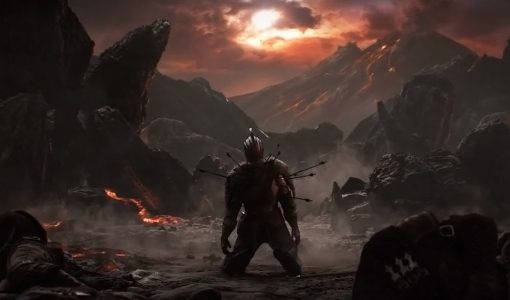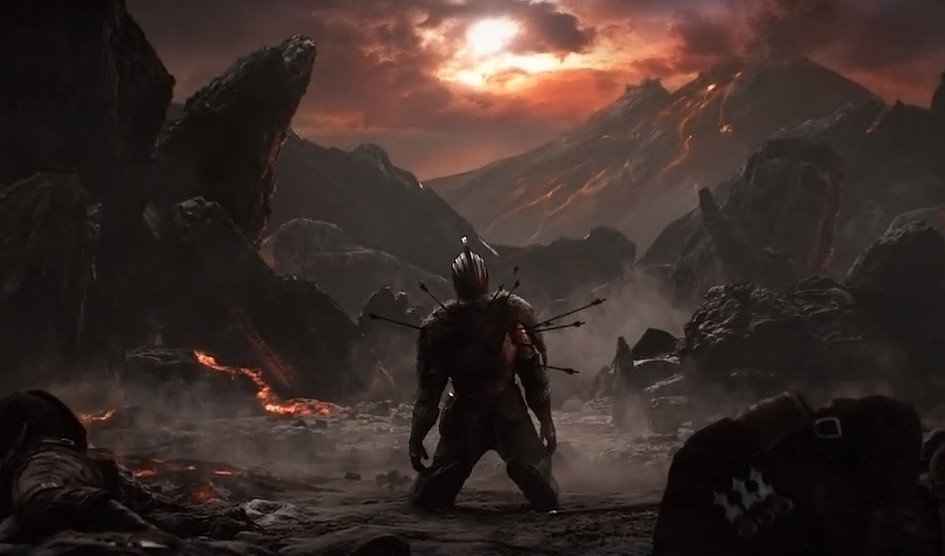 One of Bandai Namco/From Software’s most anticipated titles of E3 2015 was the unveiling and showcasing of Dark Souls III, exclusively on current-gen consoles and PC. We secured an exclusive sneak peek of what is to come in the near apocalyptic world and the Fading Sun in Dark Souls III.
One of Bandai Namco/From Software’s most anticipated titles of E3 2015 was the unveiling and showcasing of Dark Souls III, exclusively on current-gen consoles and PC. We secured an exclusive sneak peek of what is to come in the near apocalyptic world and the Fading Sun in Dark Souls III.
The basis of Dark Souls III is an apocalyptic world and heroic lore, as indicated by series director Hidetaka Miyazaki himself. The increased power of current-gen hardware is evident with the inclusion of technical marvels such as dynamic light sources or wind blown physics affecting ash (and there’s certainly a lot of it) and cloth. Miyazaki has said that the one thing to remember about Dark Souls III is about the beauty of doomsday.
It wouldn’t be a Souls title without focusing upon the combat and Dark Souls III certainly looks to be one of the best innovations to the series thus far. Rather than just the deliberate combat of previous Dark Souls entries or the more dynamic combat of Bloodborne, Dark Souls III rides a fine line between the two without feeling too frantic or too slowed down by limited movement options. Miyazaki-san said that he is working to “deepen the action element, utilizing (…) diversity of sword action and strategy.” Compared to earlier Souls titles, Dark Souls III seeks to broaden the expansion of roleplaying and character building.
Once the hands-off demo got started, it was quite easy to see the scope that Miyazaki-san has set forth with Dark Souls III. The demo opens with the player seeing a massive castle off to the distance with a large bridge connecting the two spires, surely an arena for some form of boss fight to come. True to the first Dark Souls, if you can see a place on the map, you can be sure to one day visit that location.
Many of the staples from previous titles are evident as soon as the action begins. Items laying in wait for the player to come across are indicated by glowing orbs. Many enemies dot the landscape and pay the player no heed as they pray to the fading sun. Whether you decide to attack them or simply walk on by is up to the player. One memorable centerpiece of the environment is a decaying dragon, falling apart with burn ash flowing from the corpse blowing in the breeze. With the new dynamic lighting, windblown sparks travel from the player’s torch and flow before burning up a few feet away.
A single grave rests against the wall as the player passes through a brief corridor. By offering a flame to the grave, it reveals a brief epitaph that reads: Grave of nameless retainer, raised his sword for the Lord of Cinder. Miyazaki-san assured us that there would be a number of these graves to discover across the worldscape, both in plain sight and others hidden off the beaten path.
As for the combat to Dark Souls III, there were a number of nuanced changes to look forward to. What Miyazaki-san referred to as the Ready Stance, typically Y/Triangle on a controller, was how players could wield their weapon with both hands or other actions. The longsword, a series staple, would be held in both hands for a stronger swing. The attacks for the longsword changed from simple slashes to a heavy upswing or dash thrust, both moves that carried a stronger sense of momentum and force. The upswing, for example, would be useful for breaking an opponent’s guard, deflecting a shield that numerous knights would use in combat.
It wasn’t long into the Dark Souls III demo that the player encountered a dragon, namely the Ancient Stone Dragon. Encountering a dragon early on is typical of a Souls title and certainly one of Hidetaka’s favorites. Its powerful flame breath could fill both an uppercase and lower path in flames, handy for taking out a group of idle soldier and gaining a handful of souls for no work at all but could just as easily decimate the player’s life in a single breath.


Perry Tanko
June 20, 2015 at 2:39 PMHey Bamco, when is a new .hack series coming to PS4 or XB1?